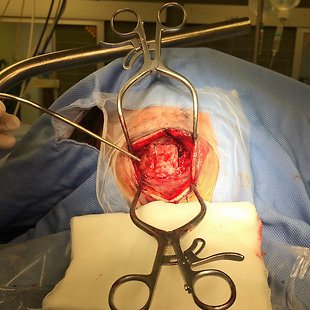Peroperative embolism
Embolism is a life threatening condition caused by particles lodging in the bloodstream and causing obstruction. According to the origin and type of particles, fat embolism, air embolism, thrombembolism, cellular embolism (metastasis, amniotic fluid) and subcellular embolism (fragmented cells) may occur. There are different causes and risk factors for each kind of embolism. Some forms may occur as a severe complication during surgery. The algorithm describes embolism during neurosurgical operation with focus on the most common symptoms, early diagnosis and proper management.
Review
Air embolism is a life threatening condition which occurs under specific circumstances – operation in the posterior cranial fossa and operation field above heart. In these cases we have to be aware that air embolism might happen as a complication. This approach is crucial for saving patient’s life. Algorithm allows students to learn how to proceed in a particular situation. In this case it needs to be fast and precise because in real life there is no room for mistakes.
Sources
ALLMAN, Keith, Iain WILSON a Aidan O’DONNELL, ed. Oxford handbook of anaesthesia. 3rd ed. Oxford ; New York: Oxford University Press, 2011. Oxford handbooks. ISBN 978-0-19-958404-8.
JINDROVÁ, Barbora, Martin STŘÍTESKÝ a Jan KUNSTÝŘ. Praktické postupy v anestezii. 1. vyd. Praha: Grada, 2011. ISBN 978-80-247-3626-6.
MIRSKI, Marek A., et al. Diagnosis and treatment of vascular air embolism. The Journal of the American Society of Anesthesiologists, 2007, 106.1: 164-177.





